| Umělec 1998/2 >> Einmal ist Keinmal 3 (Twin Peaks for artists) | Просмотр всех номеров | ||||||||||||
|
|||||||||||||
Einmal ist Keinmal 3 (Twin Peaks for artists)Umělec 1998/201.02.1998 Tomáš Lahoda | serial | en cs |
|||||||||||||
|
"The mosaic of suspicious artists who could have been connected with projects that we were sort of “sight-seeing“ in the past two issues of The Artist shows only its tiny stones but the whole of it is still far from sight. In the meantime, the obscure artist Mondrian from New York continues, undisturbed, to pile up copies of Mondrian under his bed in the attic of some sky-scraper. Or he just happens to present himself as Malevich and through this prism he takes part in events of today’s antagonistic art community. We may be reminded of his response to Alexandr Brener’s spraying of Malevich’s painting in the Stedelijk Museum which was addressed to Rudi Fuchs as published in The Artist, issue 4. In another of his previous commentaries, Malevich wrote about an article published in Art In America (September 1986) concerning an exhibition of Malevich’s appropriations by David Diao:
“Dear friends, I was very pleasantly surprised to read in an article entitled Diorama (Art In America, March 1986) about artist David Diao who basically copied my works when he used a photograph of my Last Futuristic Exhibition in St. Petersburg (Dec. 17, 1915 - Jan. 19, 1916). I was a bit confused but in the end I found the idea great and I liked the paintings, too. I just hope that someday I will be able to see them in person. It was also surprising to find out that my paintings were used by a group of artists from your beautiful city of New York. I ask myself: Why? Why now, after so many years? As if it was yesterday, I remember the cold winter 1915 in St. Petersburg, so full of snow. It was time of great expectations, enthusiasm, optimism, futurism, and, of course, the Revolution. You could feel it in the cold Russian air. The end of a great century... new age... great, cold building in 17 Mars Field... ‘The last futuristic exhibition 0.10‘... no heating... Puni running around kept on looking for nails... The nervous Kluin like a bride before a wedding. I have to admit I didn’t have any premeditated plan for my ‘installation‘ as you call it today. It was completely accidental. I only know that the red square just had to hang in the upper corner. Everything else was subordinate. As I was hanging my little supremacistic paintings here and there, I didn’t have any idea that the photograph of this installation would become so famous one day and appear in hundreds of books and articles. It is even quoted in works by my colleagues today! I don’t even remember who took that picture but it is just a black and white photograph! No colors! I have a feeling that the photograph has become more important than my supremacistic paintings! That is the main reason why I thought of organizing the exhibition again. But because of obvious reasons it was impossible for me to organize the exhibition in St. Petersburg, so I decided to show The Last Futuristic Exhibition in a small apartment in Belgrade exactly 70 years after (Dec. 17, 1985 - Jan. 19, 1986). I realize that this letter will be a big surprise to many of you. It is a general notion that I died in 1935! I know... Suetin’s coffin... a large funural march through the streets of Leningrad... a red square on my grave... Yes, there are many people who believe I am dead. But is it really so?“ Could it have been really so? This suggested doubt is followed by a similar reflection of immortality of another giant, Andy Warhol, confronting the project entitled “Beauty, thy Name is ... L. Mot” by Louis Mot. If it is not Modrian/Malevich under another of his assumed names, this time with the identity of a woman similar to Marcel Duchamp’s alter ego Rose Selave. L. Mot presents herself as Andy Warhol’s alter ego: “Beauty, thy name is ... L. Mot” as a paraphrase to “Beauty, thy name is ... Andy Warhol” - a series of photographs on which Andy Warhol poses with wigs and make-up like female models and superstars. L. Mot continues in Andy Warhol style “as if Andy was sending it all through her from some kind of virtual other world“ (S. Clemens). Andy Warhol once said: “I’ve never understood why one just doesn’t evaporate when one dies and why everything goes on just like it went until now, you’re just not here. I’ve always wanted to have my own tombstone with no sign. Actually I would like one sign: Nonsense.“ A part of L. Mot’s project “Beauty...” is a series “Drugs”, “Fountains” and “Copyright-copies”. Drugs consists of semiabstract paintings evoking Warhol’s series “Eggs”. Scattered pills of various drugs form “abstract“ stencil on a black background. Colorful red circles and ovals of pills looked at from above remind one of some quasi-minimalistic, formalist abstractions. The motif of the Fountains is a well-known urinal by Duchamp. It consists of hand-painted mimicre made of mechanic silk-print technique with typical double outlines of Warhol while Duchamp’s porcelain icon undergoes multiple transformations back to painting. A U.S. firm J. L. Mott mass produces white urinal. One day, Duchamp walked by a shop window of this company and he bought one. Using the name of Richard Mutt he sent the urinal to an exhibition as an art work entitled Fountain. (One remembers slightly the popular comic characters Mutt and Jeff from that time.) The photographer Alfred Stieglitz takes a picture of the Fountain and this picture becomes more famous than the pissoir itself which got lost later anyway. L. Mot found the photograph, and based on the picture, paints a series of fountains. “Help me out, what should I paint?“ Warhol used to ask. The series Copyright-copies consists of several hundred little pictures (20x20 cm) with a motif of six various types of the letter c in a circle - representing the copyright mark. The copyright symbol appears as a logo repeated in a countless number of variations, including an absurd Gothic c written in Schwabach as if the mark was already known during those times... But who knows? As Nietsche would say, Einmal ist Keinmal - one time is as if it wasn’t at all. Denouement and understanding of all accumulated and interweaving parts of the mosaic may now come to a conclusion in a note in L. Mott’s diary: “Authenticity, originality, otherness. Venus of Miletos and Laocoon statues are probably Roman copies of their lost originals. The famous painting of a man with a golden helmet was proclaimed not to be made by Rembrandt. William Shakespeare was a pseudonym. The historical figure of William Tell is considered fictitious by many historians. The KdF vehicle made in 1936 by Ferdinand Porsche, later known as VW Beetle, would not exist if it weren’t for the gear constructed in 1928 by Béla Barney. The Knossos Palace was for the most part made by Sir Arthur Evans. Many of Beuys’ retrospectives include his statue Schneefall (1965) only as a copy; once he needed to show the statue at two places at the same time so he decided to have a copy made. While making a copy of Franse Halse’s painting “Man With a Soft Hat”, Lovis von Corinth said in Kassel in 1970: ‘That uneducated bastard Frans Hals could paint as well as I do!‘ The most famous Notre Damme bell-ringer is Anthony Quinn, the most beautiful Cleopatra is still Elisabeth Taylor. Traditional Japanese cathedrals are taken into parts every 20 years and then reassembled...“ Searching for the origin and authors of art works may seem as vain at least in the case of our anonymous artists, like curious poking at a termite nest. “We have to accept all the good with the bad,“ Danish film director Lars von Trier would say with a twitch in his eye. "
01.02.1998
Рекомендуемые статьи
|
|||||||||||||
|
04.02.2020 10:17
Letošní 50. ročník Art Basel přilákal celkem 93 000 návštěvníků a sběratelů z 80 zemí světa. 290 prémiových galerií představilo umělecká díla od počátku 20. století až po současnost. Hlavní sektor přehlídky, tradičně v prvním patře výstavního prostoru, představil 232 předních galerií z celého světa nabízející umění nejvyšší kvality. Veletrh ukázal vzestupný trend prodeje prostřednictvím galerií jak soukromým sbírkám, tak i institucím. Kromě hlavního veletrhu stály za návštěvu i ty přidružené: Volta, Liste a Photo Basel, k tomu doprovodné programy a výstavy v místních institucích, které kvalitou daleko přesahují hranice města tj. Kunsthalle Basel, Kunstmuseum, Tinguely muzeum nebo Fondation Beyeler.
|







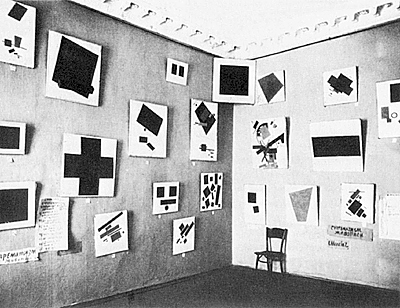
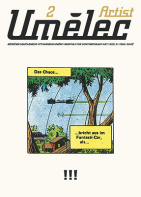















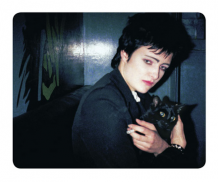




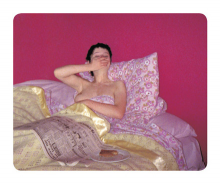
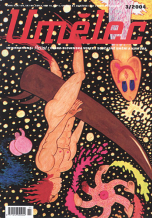
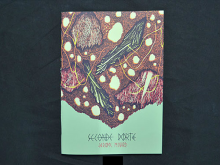
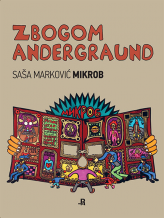


 We Are Rising National Gallery For You! Go to Kyjov by Krásná Lípa no.37.
We Are Rising National Gallery For You! Go to Kyjov by Krásná Lípa no.37.
Комментарии
Статья не была прокомментированаДобавить новый комментарий